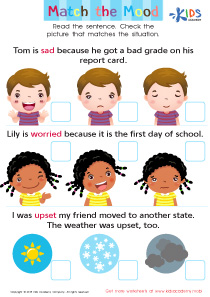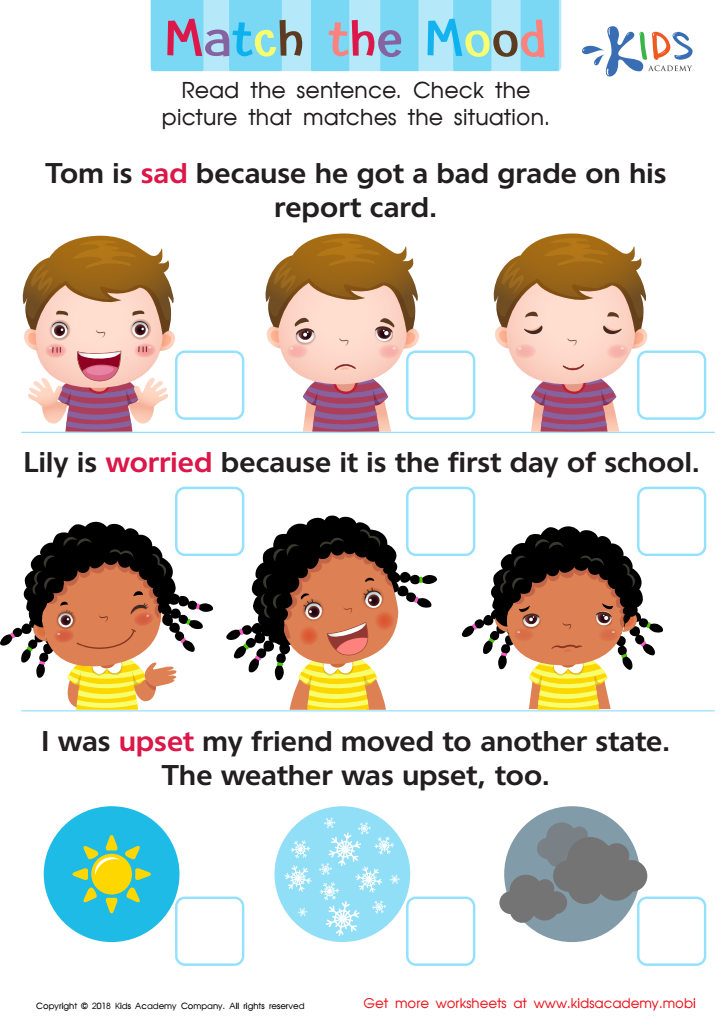Illustrations Used for Meaning - Lesson for Grade 3, Chapter - Key Ideas and Details/ Craft and Structure
In the "Illustrations Used for Meaning" lesson, designed for Grade 3 students and nestled within the Reading Literature unit under Key Ideas and Details and Craft and Structure chapters, students embark on a fascinating journey to uncover how illustrations enrich texts. Through engaging activities like the "Match The Mood Worksheet," learners will develop a keen eye for interpreting the emotional tone and thematic elements of a story, as conveyed through its visual elements.
This lesson is crucial for several reasons. Firstly, it enhances reading comprehension. By learning to analyze illustrations, students gain deeper insights into the narrative, characters, and settings, fostering a more immersive reading experience. Secondly, it cultivates critical thinking and observational skills. As students decipher the relationship between text and images, they hone their ability to infer and interpret nuanced messages. Lastly, understanding the significance of illustrations in storytelling prepares students for more complex literary analysis in the future, laying a solid foundation for lifelong reading and learning.
By the end of this lesson, students will not only appreciate the artistic aspect of literature but also grasp the importance of visual context in enriching a story's meaning and emotional impact.

-
Activity 1 / Match The Mood Worksheet
People have different moods that usually match their current emotions, and can be influenced by their surroundings or the things happening around them. Ask your child if they can tell you what kind of moods he usually experiences. Every mood has a name that describes how the person is feeling. For example, sad, happy, hurt or worried. Read the sentences in this worksheet aloud to your kids. Then, help them check the picture that matches the situation.


